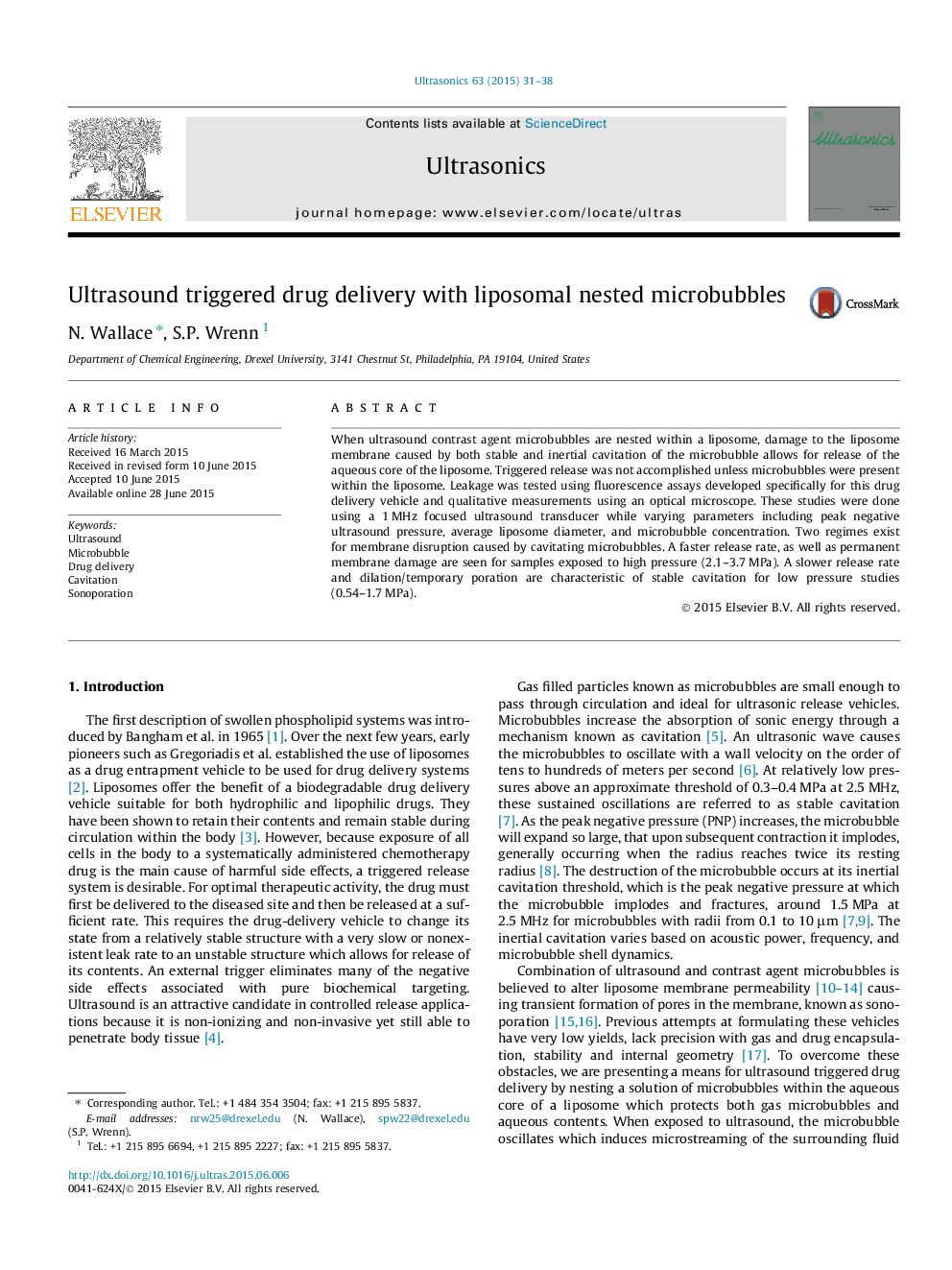| Article ID | Journal | Published Year | Pages | File Type |
|---|---|---|---|---|
| 1758646 | Ultrasonics | 2015 | 8 Pages |
Abstract
When ultrasound contrast agent microbubbles are nested within a liposome, damage to the liposome membrane caused by both stable and inertial cavitation of the microbubble allows for release of the aqueous core of the liposome. Triggered release was not accomplished unless microbubbles were present within the liposome. Leakage was tested using fluorescence assays developed specifically for this drug delivery vehicle and qualitative measurements using an optical microscope. These studies were done using a 1Â MHz focused ultrasound transducer while varying parameters including peak negative ultrasound pressure, average liposome diameter, and microbubble concentration. Two regimes exist for membrane disruption caused by cavitating microbubbles. A faster release rate, as well as permanent membrane damage are seen for samples exposed to high pressure (2.1-3.7Â MPa). A slower release rate and dilation/temporary poration are characteristic of stable cavitation for low pressure studies (0.54-1.7Â MPa).
Related Topics
Physical Sciences and Engineering
Physics and Astronomy
Acoustics and Ultrasonics
Authors
N. Wallace, S.P. Wrenn,
